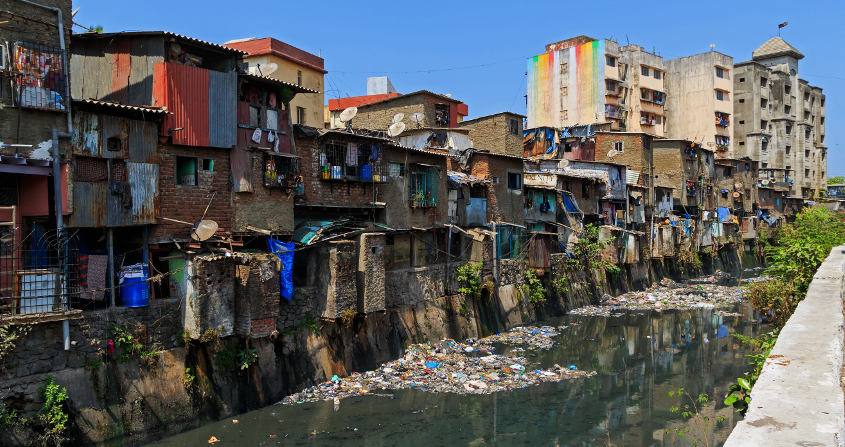The Minamata Convention on Mercury
PDF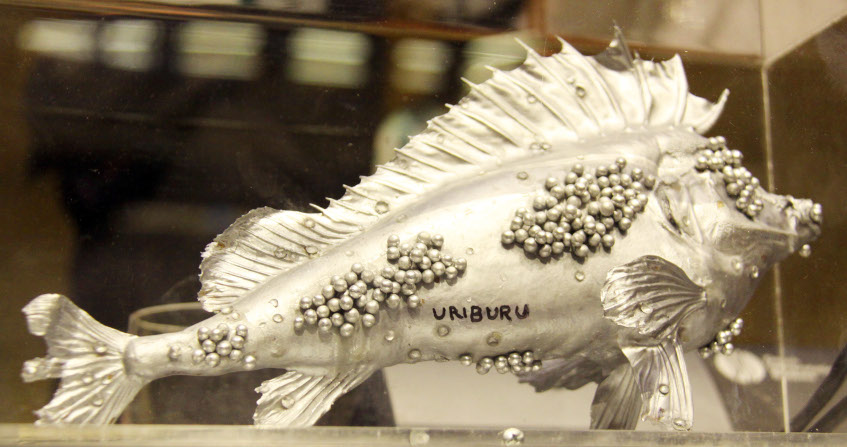
The Minamata Convention on Mercury represents a real hope for reducing the harmful effects of mercury on the environment and human health. This multilateral agreement obliges more than a hundred States to take measures on their territory to eliminate or reduce the use of mercury in our society. The history of the drafting of this convention provides an understanding of how international law can address such a vast and complex problem. There are now many challenges as the Convention has entered into force and States have to implement measures that can be costly in various areas of economic and social life.
1. Mercury in the global environment
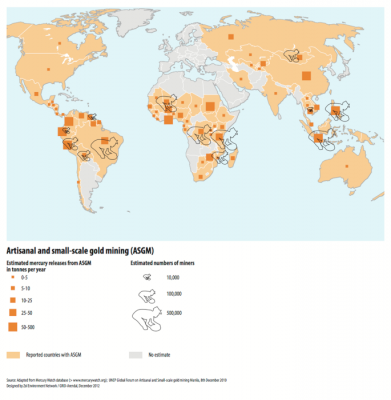
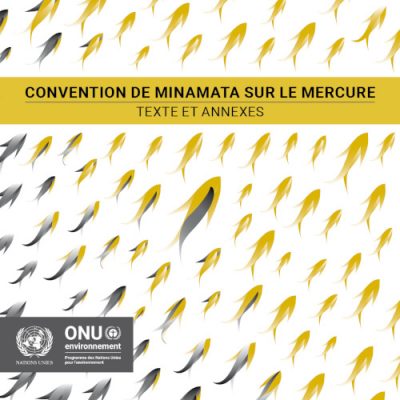
Minamata disease is one of the most painful episodes in the history of the discovery of the dangerousness of mercury. It is named after a bay in Japan that was contaminated by discharges from a nearby factory, dumping mercury into the water and causing thousands of deaths. The Minamata Convention was named in memory of the victims of this industrial disaster (Figure 2). The process that led to the signature of this text is typical of that of other conventions dealing with environmental protection.
2. The birth of the Minamata Convention
2.1. The birth of an international convention
A convention, in international law, is an agreement concluded in writing between States and governed by international law. This definition is given by the Vienna Convention on the Law of Treaties [4], the text of reference on the subject. In order to adopt the text of a treaty at an international conference, the consent of all States that participated in its drafting is required [5]. Once the Convention is adopted, at the end of an international conference, States may decide to accede to it. The Convention enters into force and becomes binding law after a period of a few months after accession by a specified number of States – then called States Parties, or Parties to the Convention.
The adventure of an international convention therefore begins long before it enters into force. The work required to write a text on which more than a hundred States agree is a real feat. For so many States to agree to engage and be bound at the global level, many steps have been taken to finally reach a consensus on how to manage the problem. One of the main challenges in the case of environmental conventions is to propose ambitious measures: the negotiation process, through compromise, sometimes leads to the drafting of texts with less binding measures. The steps that led to the conclusion of the Minamata Convention are quite characteristic of the drafting process of any environmental convention.
2.2. A Scientific Report: The Global Mercury Assessment
Before finding legal ways to address mercury issues, they must be identified. As is often the case in international environmental law, the drafting of the Convention will be preceded by the publication of a scientific report, which warns of the dangers posed by an environmental phenomenon, in this case mercurial pollution.
In 2001, the UN, alerted by the cases of mercury pollution and the global aspect of this pollution, commissioned a report to obtain a global assessment of mercury. It was issued in 2002, and updated in 2013 and 2018 [6]. Its conclusions provided evidence of the global danger of mercury and justified action at the international level.
2.3. The Global Mercury Partnership
The Global Mercury Partnership was launched by Decision 29/3 IV of the Governing Council of the United Nations Environment Programme (UNEP). This action programme has promoted immediate action by governments, the private sector and international organizations to minimize the risks posed by mercury in products and production processes. Today, the actions undertaken under this programme aim to support the rapid and effective implementation of the Minamata Convention. The Global Mercury Partnership is voluntary in nature, unlike the Convention, which provides for legally binding measures.
► Presentation slide of the Global Mercury Partnership: https://web.unep.org/globalmercurypartnership/
The Partnership is administered by a secretariat located in Geneva at the UNEP Chemicals Department. The role of the Secretariat is to ensure the coordination of the activities undertaken.
2.4. The Budapest Declaration on Mercury, Lead and Cadmium
A declaration is also non-binding: the States that have signed it are not obliged to respect it. One might think it is useless, but it is often a first step towards the development of a legally binding convention. Drawing up a declaration makes it possible to bring States together at a negotiating table and start exchanging views, to see what they agree to do, to identify areas where they are more cautious.
The Budapest Declaration on Mercury, Lead and Cadmium was adopted in 2006 within the Intergovernmental Forum on Chemical Safety, a global platform of stakeholders seeking to promote the sound management of chemicals. Although some States have agreed to take measures to protect human health and the environment from mercury, cadmium and lead pollution, only mercury has finally been regulated in a legally binding instrument, to the regret of environmentalists advocating for the regulation of all heavy metals at the international level.
2.5. A mandate: UNEP Executive Council decision 25/5
UNEP is the branch of the United Nations dedicated to the protection of the environment. It can be likened to a United Nations agency to which a specific mission has been given. UN Member States meet within UNEP, now also known as the “UN Environment”, to take programmatic decisions on global environmental protection.
UNEP is used, in particular, to provide the necessary impetus for States to adopt environmental conventions. For the Minamata Convention, decision 25/5 in 2009, in which States agreed on the idea of developing a “legally binding instrument” on mercury, was seminal. From that moment on, negotiations could really begin because the UN States agreed on the form of the instrument to be adopted to combat mercurial pollution at the global level. This decision provided what is known as a negotiating mandate.
2.6. Negotiation and adoption of the agreement
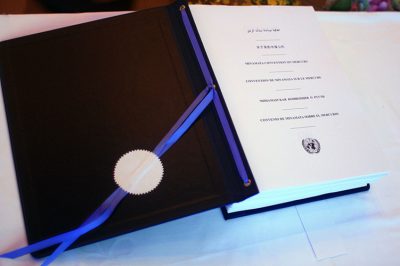
During the negotiations, many points of divergence between States emerged. These differences have given rise to compromises in the form of drafting changes in the text. For example, for measures on products containing added mercury, States have not reached agreement to ban mercury dental amalgams, which in the final text are subject to more flexible measures than other products[7].
At the fifth meeting of the INC, on 19 January 2013, the final text of the Convention was agreed (Figure 3). The Minamata Convention was adopted and opened for signature at the Diplomatic Conference (Plenipotentiary Conference) held in Kumamoto, Japan, from 10 to 11 October 2013, following an official opening ceremony in Minamata on 9 October 2013. It entered into force on 16 August 2017, ninety days after the date of deposit of the fiftieth instrument of ratification, acceptance, approval or accession as specified in article 31 of the Convention.
3. The content of the Minamata Convention
3.2. The life cycle approach in the Minamata Convention
The Minamata Convention regulates mercury by taking into account the life cycle of mercury. Life cycle refers to all stages during which mercury is released into the environment. Mercury exists in the form of ore, and its extraction will cause releases. Mercury emissions to the atmosphere from various natural and human processes are also part of its life cycle. Mercury trade, its use in industrial products and processes, artisanal and small-scale gold mining, are other identified stages in the mercury life cycle that cause hazardous releases to the environment. Finally, mercury at the waste stage marks the end of its life cycle, and a very crucial stage in terms of pollution.
This is also called “cradle-to-grave” management. It requires rules on mercury at all stages of human use to ensure that it does not escape uncontrolled into the environment. The Minamata Convention incorporates rules on all aspects identified as part of the mercury life cycle.
3.2. State obligations under the Convention

There are also measures to eliminate some products that contain mercury [9]. Examples include mercury batteries, some lamps, cosmetics and pesticides, and medical measuring instruments such as mercury thermometers. According to the Minamata Convention, production and trade in these products must cease in 2020. There are possibilities for derogations. States may decide to extend this date if they consider it too difficult for them to meet it, but this possibility is limited. [10]
The same is true for some industrial processes that use mercury. By 2025, alkali chlorine production must have ceased in the territory of the Contracting Parties. Acetaldehyde production was to have ceased by 2018 [11]. It is possible for States to derogate individually from this rule [12].
International trade in mercury is also being addressed to reduce the movement of mercury between countries [13]. Mercury waste must be managed in an environmentally sound manner [14]. This vague concept has been precisely defined on how to dispose of mercury waste without harming human health and the environment.
The drafters of the Convention also addressed the issue of mercury emissions and releases to the environment – air, water, land… Parties must put in place measures to, for example, limit mercury emissions from coal-fired power plants (Figure 4) [15].
3.3. Incentives and progressive measures
Sometimes, during negotiations, States do not agree on directly binding measures. For example, there was talk of banning the use of mercury in small-scale artisanal gold mining. This position was controversial because it could jeopardize the jobs of many low-skilled miners and deprive them of their sources of income. But the use of mercury really puts them, their families and the ecosystems near the mines at risk.
Finally, the Convention obliges Parties, if they find that artisanal and small-scale gold mining activities are significant in their territory, to develop and implement a national action plan to remedy this situation [16]. Parties are therefore not being asked to ban mercury, but to develop a more or less long-term strategy to address the adverse effects of mercury use in this area, with the aim of phasing it out.
Another example of an incentive is the development of implementation plans by the Parties. It may be drafted by the State Party with the aim of assisting it in the progressive implementation of its obligations. In this case, it is preceded by a “first assessment”, now called the “Initial Assessment of the Minamata Convention”.
The Initial Assessments of the Minamata Convention are documents prepared by developing country States Parties, usually with the assistance of the Global Environment Facility (See the Focus “The Fonds pour l’Environnement Mondial, FEM”). States receive financial assistance to assess the use of mercury in their territory, as well as to present the current status of their mercury legislation. Next, an analysis is made of the compatibility of mercury use at the national level with the requirements of the Minamata Convention. An action plan is drafted to indicate to the State precisely what actions it must take, in the more or less long term, to comply with the Convention with an indicative budget. At present, and in view of the recent entry into force of the Convention, the ongoing processes concern initial assessments and implementation plans will be developed at a later stage in the life of the Convention.
The problem of mercury-contaminated sites was also of concern to the negotiators, who did not, however, impose a deadline in the Convention for the clean-up of these sites. Indeed, the work to identify mercury contaminated sites is already colossal. As a first step, therefore, Parties should endeavour to develop appropriate strategies to identify contaminated sites and assess the risks present at these sites [17].
4. The functioning of the Minamata Convention
4.1. A convention that must necessarily evolve
The state of the environment and our understanding of it are constantly evolving as scientific discoveries are made. For this reason, an environmental convention must be a dynamic instrument, capable of evolving, for example, in response to the discovery of alternatives to a toxic substance or new hazards presented by that substance.
Once it has entered into force, the Convention must be implemented by the Parties: this aspect represents a major challenge for States. They must adopt new legislation, transform their industries, change the price of their exports and imports, ban the marketing of certain products… Some countries have other priorities, or may not have the means to make all these changes. Yet they have made a commitment. This evolution is made possible by the establishment of institutions that keep the Convention alive and support States in the implementation process.
4.2. Administration of the Minamata Convention
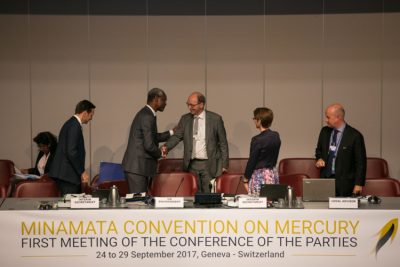
One of the specificities of international environmental law is that it is difficult to force a State to comply with a convention. It is not very common to see a State before an international judge for failing to comply with its obligations under an environmental protection convention. One reason is that it is considered that all States have an interest in complying with the Convention, if this is not the case it is often because they have difficulties in the implementation phase. This is why so-called implementation and compliance committees are sometimes created to help States comply with their obligations. As a last resort, they can use measures closer to sanctions, but the latter options are less and less accepted by States. The Minamata Convention establishes such a committee in Article 15.
4.3. Aid measures for developing countries
It is complicated for developing countries with limited resources to commit to an environmental convention, as this entails short-term costs, while the benefits often manifest themselves in the medium to long term. It is nevertheless essential that as many States as possible ratify these conventions because ecosystems do not know our borders. Developing countries therefore generally request assistance from developed countries to meet their commitments.
In the Minamata Convention, the conditions for granting this assistance are mainly described in Article 14 entitled “Capacity Building, Technical Assistance and Technology Transfer”. These are the three components for which States Parties cooperate to assist developing countries in implementing the provisions of the Convention in their territories.
5. The Minamata Convention and the rest of international law
5.1. The problem of the fragmentation of international law
Over time, international law has had to adapt to modernity. More and more areas of society have been regulated, whether it is human rights, trade with the rise of international economic exchanges, or the environment since the 1970s. We can also mention the field of international investments, which is taking on an increasing importance today. All these rules have emerged without first being ordered among themselves. The question then arose as to what would happen if the rules of one area of international law were in contradiction with those of another. We would then be faced with a conflict of norms. However, international law does not provide a mechanism to ensure the consistency of all existing rules. This is a widely studied phenomenon, called the fragmentation of international law.
5.2. Fragmentation between the Minamata Convention and other rules of international law
There are other conventions in international law that contain rules that may conflict with those of the Minamata Convention because they prescribe different and not always compatible obligations for States.
As we have seen, the Convention includes rules to restrict international trade in mercury. However, the World Trade Organization (WTO) treaties (See the Focus “The World Trade Organization (WTO)”) also contain rules that apply to trade in mercury. They are committed to promoting the liberalization of international trade in products, including mercury. The Minamata Convention may therefore require States Parties to implement a procedure otherwise prohibited by WTO treaties. There is no rule in international law to say with certainty which standard to apply in such cases. But the Minamata Convention and the WTO Agreements show flexibility and exceptions that should allow such conflicts to be resolved on a case-by-case basis.
The same problem may arise with the Basel Convention, an environmental convention that regulates the transboundary movement of hazardous waste. Mercury waste is hazardous waste, so its trade is regulated simultaneously by the Basel Convention and the Minamata Convention. If the texts contradict each other, which is possible, there is no other rule to say which convention should take precedence over the other. Fortunately, in the case of these two conventions, there is broad cooperation between the Parties, and the Minamata Convention makes explicit reference to the rules of the Basel Convention. There is therefore less risk of a conflict of standards arising between the rules of these two conventions.
7. Messages to remember
- Mercury is a global hazardous pollutant used in a variety of human activities, so it is best regulated internationally.
- The Convention entered into force on 16 August 2017 after several years of negotiations.
- The Minamata Convention on Mercury applies the life-cycle approach and requires States Parties to take measures on: mercury mining, international trade in mercury, disposal of mercury-containing products, industrial processes using mercury, mercury emissions and discharges, and mercury waste.
- The Minamata Convention contains measures to formalize artisanal and small-scale gold mining activity, without prohibiting the use of mercury in this activity.
Notes and references
Cover image. Sculpture “Pez-Peste” by Nicholas Garcia Uriburu, Argentina, was presented to the INC as a reminder of the irreversible consequences of mercury contamination and pollution.[Source: © Photo by IISD/ENB – Kiara Worth]
[1] For a detailed study on the polluting nature of mercury, the history of mercury pollution, Minamata disease and the state of mercury use in human activities today, see the article by Vincent DANEL, Mercury, fish and gold miners, Encyclopedia of the Environment.
[2] Regulation (EU) 2017/852 of the European Parliament and of the Council of 17 May 2017 on mercury and repealing Regulation (EC) No 1102/2008, Article 10.
[3] UNEP, Global Mercury Assessment, Geneva, 2013, pp. i, ii
[4] Vienna Convention on the Law of Treaties of 23 May 1969.
[5] Article 9 of the Vienna Convention on the Law of Treaties.
[6] https://www.unenvironment.org/explore-topics/chemicals-waste/what-we-do/mercury/global-mercury-assessment.
[7] H. H. H. Eriksen, F. X. Perrez, The Minamata Convention: A comprehensive response to a Global Problem, RECIEL 23(2) 2014.
[8] Article 3.2 and 3.3 of the Minamata Convention.
[9] Article 4 of the Minamata Convention.
[10] Article 6 of the Minamata Convention.
[11] Article 5 of the Minamata Convention.
[12] Article 6 of the Minamata Convention.
[13] Article 3 of the Minamata Convention.
[14] Article 11 of the Minamata Convention.
[15] Articles 8 and 9 of the Minamata Convention.
[16] Article 7 of the Minamata Convention.
[17] Article 12 of the Minamata Convention.
The Encyclopedia of the Environment by the Association des Encyclopédies de l'Environnement et de l'Énergie (www.a3e.fr), contractually linked to the University of Grenoble Alpes and Grenoble INP, and sponsored by the French Academy of Sciences.
To cite this article: THIRION Sophie (August 18, 2019), The Minamata Convention on Mercury, Encyclopedia of the Environment, Accessed April 29, 2024 [online ISSN 2555-0950] url : https://www.encyclopedie-environnement.org/en/society/the-minamata-convention-on-mercury/.
The articles in the Encyclopedia of the Environment are made available under the terms of the Creative Commons BY-NC-SA license, which authorizes reproduction subject to: citing the source, not making commercial use of them, sharing identical initial conditions, reproducing at each reuse or distribution the mention of this Creative Commons BY-NC-SA license.







